#Millenium Project
Explore tagged Tumblr posts
Text
Principios del movimiento maker
Las nuevas tecnologías están llevando al surgimiento de nuevas profesiones como los makers y fabers, que han entendido cómo sacarle provecho a la innovación y el DIY. A través de sus principios como crear, innovar, compartir, jugar, participar y apoyar se impulsa el cambio en la innovación.

View On WordPress
#DIY#Faber#FabLab Perú#FabLabs#Futures Week 2023#Maker#Maker Filosofía#Maker Hub#Millenium Project#Unifranz
0 notes
Text
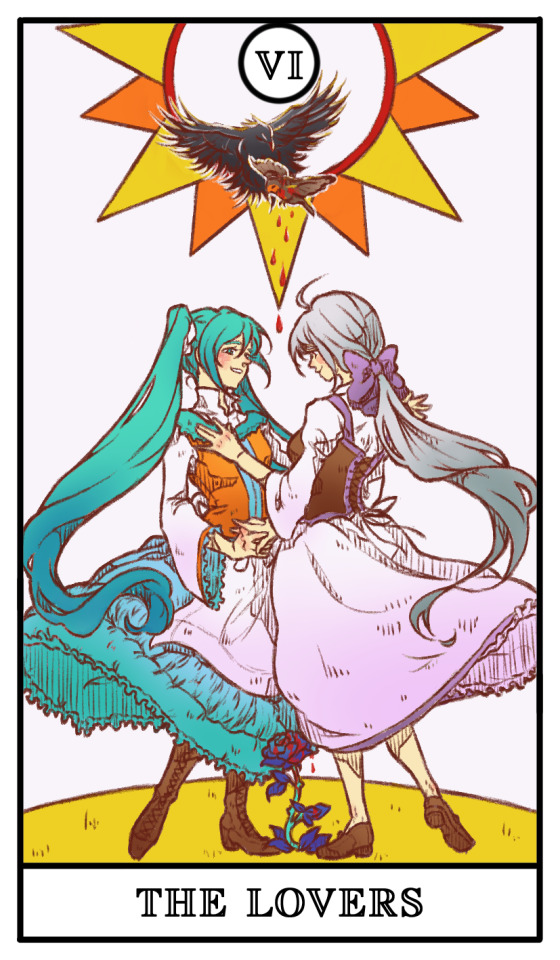
[ THE EVILLIOUS TAROT PROJECT ]
06. The Lovers
---
#the evillious tarot project#the evillious chronicles#evillious fanart#vocaloid#mothy#vocaloid fanart#hatsune miku#michaela#yowane haku#clarith#millenium wiegenlied#daughter of white#the lovers
828 notes
·
View notes
Text
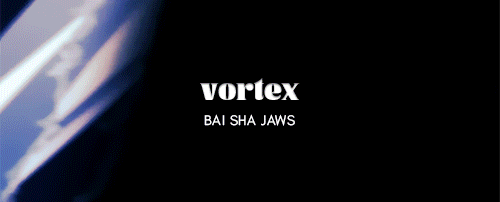

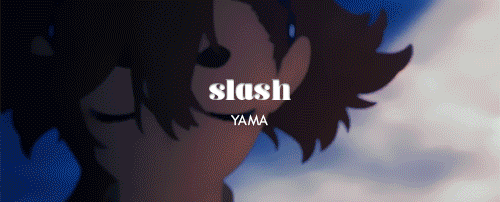
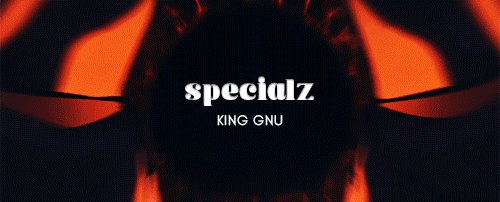


My favorite OP music of 2023 animated series (that I follow)
#link click#jigokuraku#mobile suit gundam the witch from mercury#jujutsu kaisen#zom 100 bucket list of the dead#oshi no ko#bai sha jaws#millenium parade#sheena ringo#yama#king gnu#kana boon#yoasobi#fav song project#myedit#mygif#honorable mentions go to#Yuusha by Yoasobi#Tombi by Kvi Baba#Entertainment by Mili#River by Anonymouz#Paradox by Survive Said The Prophet#Kizuna no Kiseki by Man with A Mission x Milet#01 by Queen Bee#Hana ni Natte by Ryokuoushoku Shakai#now I DO have a hard time picking what to put here#they all go SO HARD
164 notes
·
View notes
Text
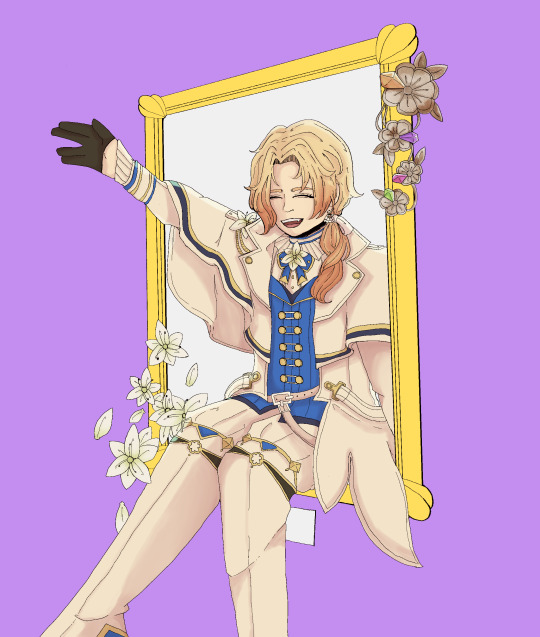
Living Millenium - Iyowa
#prsk#project sekai#iyowa#pjsk#tenma tsukasa#pjsekai#living millenium#prsk fanart#god works fast. colopale works fast. AND I FUCKING CALLED IT.#ive not stopped crying abt this all day tbh im so happy
34 notes
·
View notes
Text
at some point i would like to write something thats like, drawn from the cultural cache of british mythology and not the refracted JRPG tinged, kojiki fascinated stuff that i pump out now but everything seems to converge on 90s raves, abandoned geodesic domes and horrid fae molly. maybe this will be my utaware
#can you tell ive got bedrock memories of realizing that i was a human in the millenium dome and the eden project?#its hard not to listen to TSOL/BoC or even Orbital's Brown Album and not get sucked into that madness#Lush 3.1/3-2 has a morning after an elven rave feeling#i think im coming to the conclusion that i dont think i could be satisfied with a regular setting#by that i mean pulling from the existing titans#as much i can do that while avoiding the background radiation#im already cooked by elf love
3 notes
·
View notes
Text
youtube
Capcom Fighting Collection 2 - Game Spotlight Trailer #2
#youtube#capcom#capcom fighting collection 2#plasma sword: nightmare of bilstein#power stone#power stone 2#capcom vs. snk: millenium fight 2000 pro#project justice#street fighter alpha 3 upper#capcom vs. snk 2: mark of the millennium 2001#capcom fighting evolution#game spotlight#trailer
2 notes
·
View notes
Text
Title: 病床の耳 (Ears at the Sickbed)
Arrangement: イコ
Album: 悲しい知らせ
Circle: 深夜放送
Original: Gensokyo Millenium ~ History of the Moon
#touhou#touhou project#eirin yagokoro#Gensokyo Millenium ~ History of the Moon#imperishable night#深夜放送#悲しい知らせ#イコ#volume warning#this gets loud right at the end
11 notes
·
View notes
Text
i love the new vbs comm so much.
#AKITO AND KOHANES VOICES....#the autotune part is kinda goofy#but everything else is peak#THE “GO ALL OUTTTTTTTTTTTTTT” AT THE END.... GOD im looping that part for the next millenium#i love vivid bad squad!!!#project sekai leaks#pjsk leaks#prsk leaks
4 notes
·
View notes
Text

Millenium: Bruh
2 notes
·
View notes
Text
SENNEN IKITERU WXS FULL VER FINALLY I CAN DIE IN PEACE
#project sekai#wonderlands x showtime#ANATA NO KIMOCHI GA SENNEN IKITERU NO SA#thank you sennen ikiteru aka living millenium aka 1000年生きてる
0 notes
Text

Vůbec první kousek z mých vlastních začátků, konečně se na ni po letech pustíme. 💪🔧
1 note
·
View note
Text
[The Millennial Dome] couldn't have had a worse reception if you'd worked hard to deliberately upset everybody.
— Richard Rogers, co-architect (quoted by Kristian Crow, YouTube, 11 July 2024)
0 notes
Text
youtube
#til#there was a version of this filmed live#not lying when I say#this is one of the best tracks of this millenium#may the soil rest lightly on her head#Whiskey Cambodia#Cambodian Space Project#music#Youtube
1 note
·
View note
Text

2019-01-18 20:12:10 from the archives
One of the last times I photographed this statue.
#canon g9x#img_2701#photographers on tumblr#sunshine#australia#victoria#melbourne#original photographers#long term project#pc3020#statue#millenium man statue
0 notes
Text


I wanted to save these for when I was done with the whole project but I have a feeling the next few entries will take a long time to make since each era has so many movies (Renaissance Era, Experimental Era and the Modern Era) and I got impatient with myself so I'm posting what's done so far.
So I decided to do a project where I draw films from each Disney era together. For those who don't know about Disney's animation eras, here's a good guide: https://www.bfi.org.uk/features/many-merry-eras-disney
Another one that had to be split into two drawings, I'm sure the Revival Era and the Modern Era will have to each be split as well.
Now in a new millenium, Disney was moving away from the Renaissance era's Broadway inspired films and entering a new era experimenting new technology and new ways of storytelling. While it was an exciting time for being creative and taking risks, they didn't always pay off. Thankfully some of the films from this era that failed at the time have been reevaluated over time as underrated masterpieces, and even some that still aren't viewed in a positive light still have a cult following. Many critics viewed the failures from this era as a consequence of putting technical innovation over storytelling.
The first film from this era was Fantasia 2000, the sequel to 1940's Fantasia. Interestingly, Walt initially planned way back in the day to have Fantasia be a continuing film series with new segments replacing older ones in each release. Tragically, plans for this were scrapped when the original film unfortunately ended up being a box office failure. It wasn't until 1984 when Walt's nephew Roy E. Disney suggested the idea of a Fantasia sequel to then-CEO Michael Eisner that the idea was revived, however, then-chairman Jeffery Katzenberg was uninterested. After the 1990 re-release of Fantasia was a financial success, Disney saw it as a sign that there was enough public interest in Fantasia to justify a sequel. Michael Eisner finally gave the film the greenlight in 1991, and years later in the year 1999, the film premiered at Carnegie Hall in New York, then in 2000 the film had a wide release in IMAX. The film was a critical success but sadly ended up becoming a box office flop like its predecessor.
The next film was Dinosaur, and while it's unfortunately a forgotten film today, it has a significant role in Disney animation history as their first CGI animated film. The idea was originally conceived by director Paul Verhoeven and special effects artist Phil Tippet as a stop-motion animated film and pitched to Disney in 1988 but due to budget disputes with Jefferey Katzenberg, the two filmmakers left the project and it ended up shelved in development hell. It wasn't until 1994 that development on the project began by shooting various test footage of computer-generated characters placed digitally in miniature model backgrounds. Computer-generated backgrounds were considered as well, but ultimately it was decided that the film would combine CGI characters in live-action scenery. Michael Eisner greenlit the project, however he insisted that the characters talk during the film; previously it was planned for the animal characters to be silent while a narrator spoke throughout the film like a nature documentary. When the film premiered it was a box office success, and the film received positive reviews for its visuals, however the reception story and characters were more mixed in reviews.
The next film was The Emperor's New Groove, which was actually a complete rehaul of a cancelled film called Kingdom of the Sun, a musical taking place in the Incan empire with a Prince and the Pauper story involving a selfish emperor switching places with a peasant who looks just like him, however the emperor gets turned into a llama by an evil witch who threatens to reveal his identity unless he obeys her. The emperor would learn humility as a llama and fall in love with a llama herder, and the two would team up to undo the witch's plans. The film ended up in a troubled production, and in the end it was clear that it wasn't far enough in production to be released on its scheduled released date. Roger Allers, who would have been the director for the film, quit the project. This lead to Michael Eisner telling producer Randy Fullmer that he had two weeks to salvage the project or production would be completely shut down. The film was ultimately changed to The Emperor's New Groove, and instead of being a musical inspired by The Prince and the Pauper it was now a buddy comedy with no love interests. Since the film had to salvaged in such a short time-frame, it was actually made without a fully finalized script and was made unconventionally with a more improvisational approach with the writers basically given free rein which lead to the film being as hilarious as it is. When the film premiered, it was unfortunately not a box office success, however it did receive positive reviews and to this day is considered one of Disney's funniest animated movies.
Disney's next film was Atlantis: The Lost Empire, a science fantasy adventure film inspired by works of Jules Vernes such as Journey to the Center of the Earth and Twenty Thousand Leagues Under the Sea. The filmmakers used the Internet to research mythology surrounding Atlantis, visited museums to study 20th century technology, looked at ancient architecture as inspiration for Atlantis, and even hired Mark Okrand, who invented the Klingon language for Star Trek, to create a language for Atlanteans. At the time of the film's release, it was known for using more CGI than any other traditionally animated Disney film. When the film premiered, it was not a box office success and received mixed reviews, although the animation received positive reviews.
Their next film, Lilo and Stitch, would have a much better fate. The idea for the film started in 1985 with a failed children's book pitch made by Chris Sanders about a creature named Stitch who lived in the forest. In 1987 he was hired at Disney to work in the visual development department for The Rescuers Down Under, but he soon transitioned into storyboarding for Beauty and the Beast, The Lion King and eventually promoted to head the story on Mulan. In 1997, it was discussed that Disney should try its hand at creating a smaller and less expensive film in wake of the large-budget films they had already done, an idea inspired by the similar production history of Dumbo. When Chris Sanders was asked if there were any stories he'd be interested in developing into an animated film, and Chris Sanders pitched an idea based on his failed children's book project, pitching an idea about Stitch crash-landing in a forest surrounded by woodland animals, but then-vice president Thomas Schumaker suggested that Stitch should interact with humans instead. The story was pitched as taking place in Kansas, but after glancing at a map of Hawaii on his wall and remembering a vacation there, Sanders decided to change the location to Hawaii. Unlike previous Disney animated films, the film's pre-production team remained relatively small and isolated from upper management until the film went into full production. When the animation team travelled to Kuaui for research for the film, the tour guide explained the concept of Ohana, a Hawaiian term meaning "family", a concept which became an important part of the film's theme. Watercolor paint was chosen for the film's background art as opposed to the traditional gouache technique. While watercolor had been used in early Disney shorts as well as Snow White, Pinocchio and Dumbo, the technique had been abandoned in the mid-40s in favor of less complicated media such as gouache. When the film released, it was both a critical and box office success, and to this day is considered one of Disney's most beloved movies.
The next film was Treasure Planet, a steampunk science fiction take on Treasure Planet but in space. The idea was originally pitched by Ron Clements in 1985 (at the same meeting where he and John Musker pitched The Little Mermaid) but was rejected by Michael Eisner, pitched again then turned down again in 1989, then pitched and rejected a third time after the release of Aladdin. These rejections angered Clements and Musker so much that they approached then-chairman Roy E. Disney, who backed the filmmakers and made his wishes known to Eisner, who in turn agreed that the studio should produce the movie. In 1995, their contract was re-negotiated to allow them to commence development on Treasure Planet when Hercules reached completion. When the film premiered it was a box office failure but received positive reviews, and throughout the years after it's been considered an underrated gem.
The next film was Brother Bear, with the idea for a film about bears being suggested after the success of The Lion King in 1994, leading to Michael Eisner urging for more animal-centric films. Initially the story idea was inspired by King Lear and centered around an old blind bear who travelled through the woods with his three daughters, but in 1997 animator Aaron Blaise joined the project and wanted a more naturalistic story, so he and producer Chuck Williams produced a two-page treatment of a father-son story in which the son is transformed into a bear, and in the end, remains a bear, which then-president Thomas Schumaker approved. After the project was greenlit, the team went on a research trip to Alaska in 1999, and a year later went to Yellowstone National Park, Grand Teton National Park and Sequoia National Park. In 2000, the story evolved into a tale where the transformed bear Kenai is taken under the wing of an older bear named Grizz, but after struggling to get charm into the story, Grizz was changed to a bear cub named Koda. When the film premiered, it was a box office success but received mixed reviews. As the years went on, it became known as another underrated masterpiece from Disney.
Their next film, Home on the Range, was originally conceived in the 90s as a supernatural Western called Sweatin' Bullets, about a timid cowboy who visits a ghost town and confronts an undead cattle rustler, inspired by the song "Ghost Riders in the Sky". The story was changed to one about a little bull named Bullets who wanted to be more like the horses that lead the herd, then finally in 1999 it was changed to a story about three cows who become bounty hunters to save their farm. The film was originally scheduled for a 2003 release while Brother Bear was slated for a 2004 release, however Disney ended up switching the dates in order to promote Brother Bear on the Platinum Edition release of The Lion King. When the film premiered, it received mixed reviews and was a box office disaster, and went on to be blamed for killing 2D animation at Disney (at least until The Princess and the Frog released in 2009, but that's for a future upload). Nowadays the film still is looked at unfavorably, but it does still have its fans.
The next film Chicken Little, was basically Disney's attempt at making a film like Shrek, meaning that they made a fairy tale parody with crude, edgy, self-aware humor and pop culture references, but needless to say, their attempt was unsuccessful. When the film idea was developed in 2001, the character of Chicken Little was a female, and the story would be about her going to a Summer camp to reduce her anxiety as well as repair her relationship with her father, and discovering her camp counselor planning a nefarious plot against her hometown. When it was pitched to Michael Eisner, he suggested Chicken Little be changed to a boy because boys wouldn't want to see a film with a female protagonist (yes, really). When David Stainton became Disney animation's new president in 2003, he decided the story needed a different approach, and during the next three months it was changed to a story about Chicken Little trying to save his town from aliens. When the film premiered it was a box office success but received mixed reviews, and today it still isn't viewed favorably (but like Home on the Range, it does still have its fans).
The next film was Meet the Robinsons, based on a 1990s children's book A Day With Wilbur Robinson by William Joyce, who pitched the story idea to various filmmakers like Steven Spielberg, George Miller, Peter Jackson, Francis Ford Coppola and Diane Keaton as a live-action film before eventually being acquired by Disney as an animated film. This film would be Disney's first time animating humans in CGI, so they ended up using Pixar's The Incredibles as inspiration, as well as looking at their own films from the Silver Age such as Alice in Wonderland, Cinderella, Peter Pan and some Warner Bros. cartoons as inspirations for 1950s aesthetics. When the film premiered, it got positive reviews but was unfortunately a box office failure. Thankfully it also gained a reputation as an underrated classic like several of its other predecessors in this era.
Finally, there's Bolt, a film which originally began as a story by Chris Sanders called American Dog, a story about an anthropomorphic dog celebrity named Henry who one day finds himself stranded in the desert with a one-eyed cat and a rabbit, and the three of them search for new homes, all while Henry still thinks he's on TV. Chris Sanders was eventually removed from the project after resisting changed to the story and went to work at Dreamworks instead, however in recent years Sanders has assured that he has no ill will over the decision and approved of the final film. The dog Henry was changed to a normal dog thinks the show he's the star of is real, and when his owner Penny gets "kidnapped" in the show, he runs away from the studio to "rescue" her, but gets lost and and ends up teaming up with a sarcastic female alley cat named Mittens and a fanboy hamster named Rhino to get back home, and along the way realizes his show was never real. When the film premiered it was a box office success and received positive reviews, and was overall a sweet and heartwarming film to end the era.
#sorry this one came out so long lol#fan art#disney#disney's experimental era#fantasia 2000#dinosaur#the emperor's new groove#atlantis: the lost empire#lilo and stitch#treasure planet#brother bear#home on the range#chicken little#meet the robinsons#bolt
55 notes
·
View notes
Note
do you know any books that dan and phil have mentioned liking?
dan's favorite book series was the millenium trilogy (x) and he loved the edge chronicles as a child (x) phil obviously has always loved stephen king
i'm trying to remember the book they both mentioned reading recently during one of the tit preshows and it's killing me that i can't asfdsgshskjg does anyone remember what it was😭 update: it was project hail mary! ty @dandp
42 notes
·
View notes